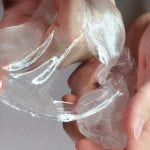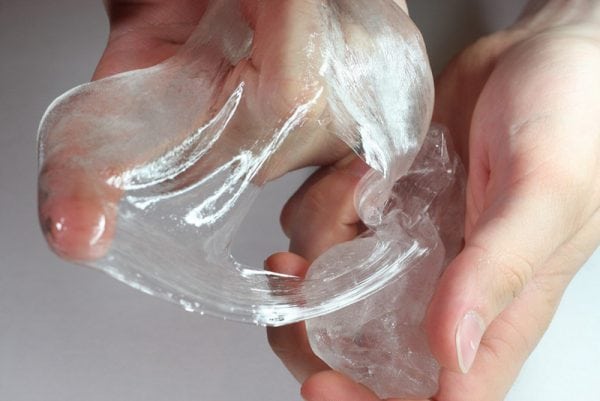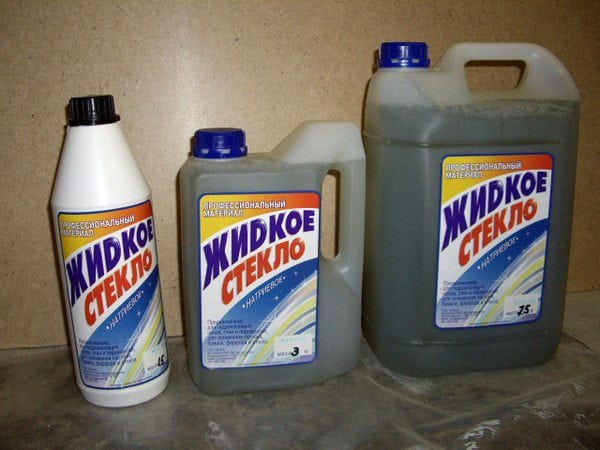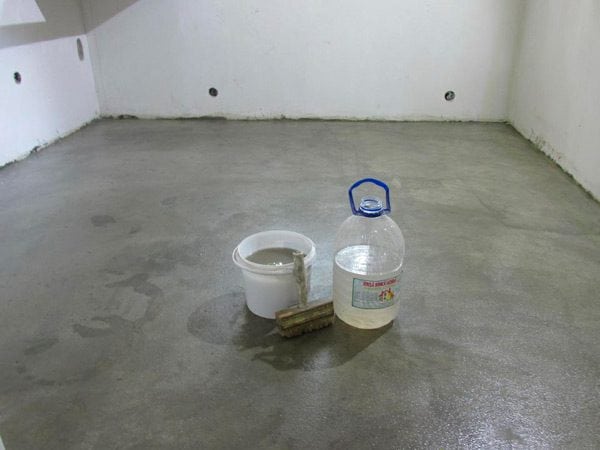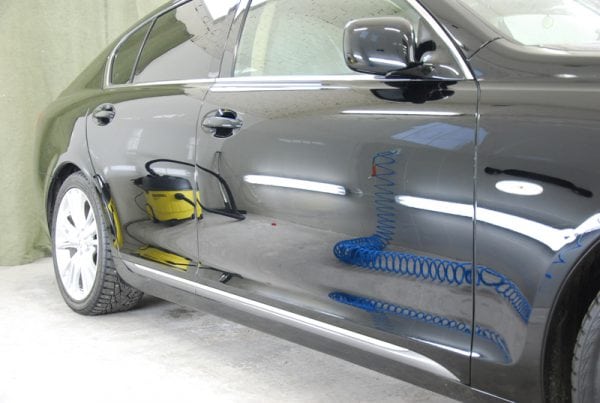With the advent of the protective coating on the construction market, which is based on liquid glass, consumers immediately appreciated its unique capabilities. Currently, this composition has a fairly wide scope of use. How is liquid glass processing carried out and what is it?
What is the material?
Silicate glue or, as it is otherwise called, liquid glass is an aqueous solution of silicate salts. Depending on the main component, there are:
- sodium liquid glass, characterized by a high degree of stickiness, fire resistance, antiseptic and waterproofing properties;
- potassium, which is immune to weathering and acid exposure.
Sodium glass is used to accelerate the hardening of cement mixtures due to the ongoing chemical reaction.
Liquid glass is widely used as a building and finishing material due to its properties:
- Hydrophobic (water repellent). Due to this property, liquid glass is used for the treatment of surfaces exposed to prolonged contact with the liquid, including wood products. As a result of impregnation, they will not be subject to swelling and deformation.
- Antiseptic. This property allows the use of silicate glue for the protective impregnation of walls from such negative manifestations as mold and fungus.
- Fireproof. When impregnating floors and walls with liquid glass, the fire safety of the room increases.
- Antistatic. The material excludes electrification and does not provoke the occurrence of static electricity.
- Acid resistant. Silicate impregnation helps protect the surface from exposure to chemicals.
- Environmentally friendly. This material does not emit substances harmful to the human body.
Application for waterproofing
Liquid glass due to its chemical composition copes with the filling of porous materials:
- brick;
- concrete;
- plasters;
- wood.
When treating a surface with a silicate composition, its hydrophobicity and strength increase. Therefore, liquid glass gained special distribution in the processing of foundations, walls and floors of basement rooms, wells and pools. For the manufacture of hydrophobic primers it is necessary to combine water, cement and ZhS in equal proportions.
The surface to be treated must be preliminarily prepared: leveled and cleaned of contaminants. When processing wood, it is desirable to preserve its natural roughness (this will provide better adhesion of materials). If during cleaning it was necessary to wet the surface, then it must be allowed to dry before processing. The thickness of the waterproofing mortar layer must be at least 3 mm.
Silicate solution is also used for flooring in a bathhouse or bathroom. To create a hydrophilic coating of a large area, for example, to cover a floor or walls, you can use a spray gun, roller or brush.
Application to increase the fire resistance of materials
Fire resistance of liquid glass allows you to use it for:
- masonry of fireplaces, chimneys and stoves;
- production of heat-resistant concrete and cement, as well as refractory paints and varnishes;
- wood impregnation to give it fire retardant properties;
- coatings of elements of metal structures.
To prepare a refractory silicate solution, 3 parts of sand, 1 part of cement and 1 part of water glass are required. Such a mixture quickly hardens as a result of a chemical reaction, therefore, it is possible to first make the necessary structure from a normal solution, and then perform an external coating of concrete with a refractory layer.
To give the surface refractory properties, it is possible to cover wood or concrete only with liquid glass from a spray gun, using it as a primer. Wall impregnation can also be done either with an independent solution of silicates, or in the form of a cement screed for the floor.
to contents ↑Flooring
In bathrooms, showers, bath rooms and indoor pools, which are characterized by constant humidity and wetting of the floor, it is possible to make flooring using liquid glass. To fill the floor you must:
- if wood floors are laid, then first perform a concrete screed;
- pour silicate solution in equal portions on a dried surface;
- smooth the adhesive layer with a wide spatula;
- final leveling of a layer with a thickness of 3-5 mm using a squeegee;
- after the silicate layer has dried, finish the coating with varnish (polyurethane or epoxy is better).
It is worth considering that it is impossible to decorate a floor already covered with liquid glass. When pouring concrete screeds, the floor surface will have a “concrete” color and texture, respectively. Dressing the floor must be done before applying a layer of water glass. Alternatively, concrete can be painted. At the same time, it is recommended to add a small amount of silicate to the paintwork materials to improve their adhesion to concrete. After drying the paint, you can fill the floor according to the above algorithm.
to contents ↑By the way, taking into account the non-toxicity of the material, its heat and water resistance, it is allowed to use it for treating a steam room, which is most often made of wood and, subject to constant exposure to humid hot air, can undergo deformation without proper care.
Other areas of use
Liquid glass is also used for many other purposes:
- Silicate glue is widely used as an antiseptic primer for impregnating walls against mold and fungus.
- This material is also useful when laying PVC or linoleum tiles. In this case, the silicate solution will serve as an adhesive.
- High adhesive properties of liquid glass allow it to be used for sealing or connecting pipes, putty joints. In this case, the parts can no longer be disassembled, and if it is necessary to replace one of the elements, it will be necessary to completely dismantle the structure.
- Also, as a glue, this solution can be used in the repair of furniture made of wood and other materials.
- Gardeners are used to process trees after pruning. Slice locations become extremely vulnerable to bacteria that damage wood. Their putty with liquid glass “seals” the slice and protects the tree from destruction.
Car after protective polishing using liquid glass - This substance can also come to the rescue of housewives: an aqueous solution, made in a ratio of 1 to 25, allows you to clean the dishes from heavy contaminants. To achieve the best effect, it is recommended to boil the dishes in the prepared solution.
- It can be used to remove old coatings.
- Silicate solution is used even in agriculture. The experiments have shown that seeds treated with this composition are not exposed to bacteria and germinate faster.
- Use in wall decoration: when covering walls with cullet, pre-impregnation with liquid glass is carried out. This eliminates the absorption of moisture and increase the wear resistance of glass wallpaper. In some cases, to increase the life of the walls covered with ordinary wallpaper, and to give them a special shine, a finish coating with silicate solution is performed.
- When processing wood products. An object made of wood is enough for a while to immerse in a container with silicate solution.
In construction stores, liquid glass is presented in a wide assortment: both in pure form, and ready-made building materials based on it. Due to the low price, this material is available to any consumer, regardless of the level of his income. The main thing is to choose a composition that is suitable for its characteristics.

